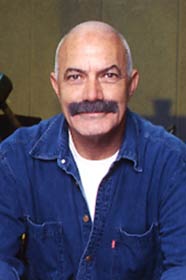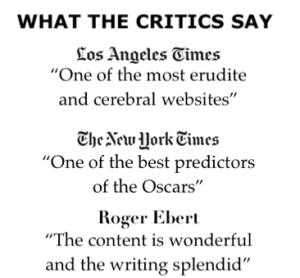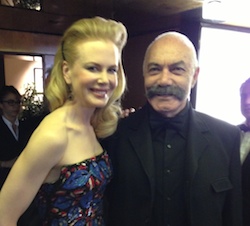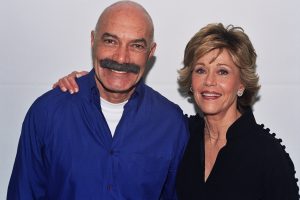If State Fair and The Life of Jimmy Dolan evoked nostalgically a simpler, decent rural life in the country, King Vidor’s Our Daily Bread (1934) was a harsher and more important film, both artistically and ideologically.
Its production, exhibition, and reception are instructive in the insights they offer about the possibilities of independent filmmaking within the Hollywood studio system.
In Our Daily Bread, Vidor shows again his belief in the rehabilitative and regenerative functions of country life. Deeply disturbed by the unemployment and low morale of the Depression, Vidor sought to channel “this nationwide unrest and tragedy into a film.” “I wanted to take my two protagonists out of The Crowd,” recalls Vidor, “and follow them through the struggles of a typical young American couple in this most difficult period.”
In The Crowd (1928), originally titled One of the Mob, Vidor examined, with unprecedented realism, the predicament of two individuals in the anonymity and indifference of the Big City. To avoid melodramatic treatment, Vidor focused on the hopes and frustrations of two average people amidst the harsh metropolitan. He cast the two protagonists with unknown players: James Murray (an extra who happened to walk by) and Elizabeth Boardman. Murray plays a clerk, holding an unmeaningful job in a huge office and living in a small and shabby apartment.
Vidor was sure that every studio in town would be happy to produce his film. He first turned to his friend Irving Thalberg, who had encouraged him to make socially conscious films. But after keeping the script for weeks, Thalberg told him it was not appropriate for MGM. As critic Baxter observed, the last thing MGM–and the other studios–needed, was such a downbeat story. “All the major companies were afraid to make a film without glamour,” recalls Vidor, “even though admitting that the struggle depicted was a heroic one.” “The fact that my characters were unemployed and down to their last few pennies seemed to scare the studios.” The only alternative was to raise funds by himself, though in order to get money from the banks, he needed to show a releasing contract with a distribution company. But there was a problem: the bankers were negatively portrayed; in a powerful scene, a banker forces the sheriff to make a foreclosure sale.
Fortunately, Charlie Chaplin, one of the founders of United Artists, which functioned as a releasing company, came to the rescue. Committed to the project, Vidor pawned practically everything he owned. To save money, he rented an abandoned golf course outside of Hollywood and shot many scenes without dialogue.
Vidor found the nucleus of Our Daily Bread‘s narrative in a Readers’ Digest article written by an economics professor, wherein he proposed the organization of co-operatives as a solution to the unemployment problem. Vidor conceived of his film as a second treatment of the lives of John and Mary, “the average American man and woman. At the film’s start, the unemployed John pawns his guitar for a chicken. He claims he does not want favors, “just the chance to work.” When he and Mary inherit a broken-down farm, they leave the city, determined to make it work. But John soon realizes he lacks the necessary knowledge, so he hires a Swedish farmer and advertises for workers.
Many people show up, and John selects those who would be most useful to the farm. Vidor shows, in a series of impressive long shots, the joy of people building their cooperative. This includes various collective celebrations: constructing living quarters, ploughing and planting the fields, dancing and singing. The members complement each other in skills: the carpenter builds a wooden frame for the stonemason, while the latter builds the carpenter’s chimney.
Message Movie
Our Daily Bread advocates self-sacrifice and suppression of individualistic (selfish) goals for the sake of nobler collectivist goals.
The escaped convict, who becomes the commune’s policeman, decides to surrender so that his reward will be collected by the cooperative. Nominally, the form of government is democratic, though the film shows the members’ dependency on John’s charismatic leadership. A figure modeled on F.D. Roosevelt, John is not an elected but acclimated leader.
The film abounds with John’s patriotic speeches. In one of those he uses the Mayflower pilgrims to rally the group: “When they arrived on the continent, what did they do Stand around and beef about the unemployment situation or the value of the dollar No. They set to work to make their own employment, build their own houses, and grow their own food.” “If they got along without landlords and grocery bills,” he concludes, “so can we. What we’ve got to do is help ourselves by helping others. We’ve got the land and we’ve got the strength.” John is the commune’s owner and leader–the film stops short of advocating collectivist ownership of the land.
Ultimately, like other films before and after, Our Daily Bread is unable to resolve the tension between individualistic leadership and collectivist values.
Every member seems to agree that John is the natural leader, as the Swedish farmer puts is: “All I know is ve got a big job, eh, and we need a Big Boss. And Yohn zims is the man for the Boss.”
Vidor treated the building the ditch “in a manner I imagined a choreographer would use in plotting out the movements of a ballet,” thus orchestrating every move of the barrier’s opening and the rush of water. It was the longest scene to film, taking ten days of rehearsal and shooting. For sound, Vidor used a metronome and a bass drum, and composer Alfred Newman wrote rhythmical tempos.



